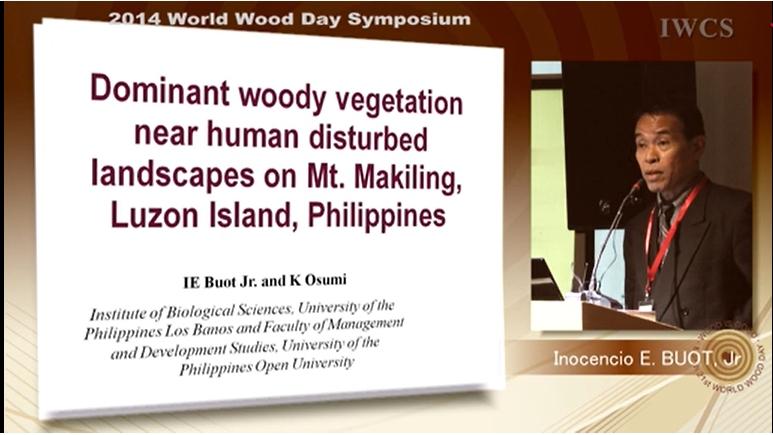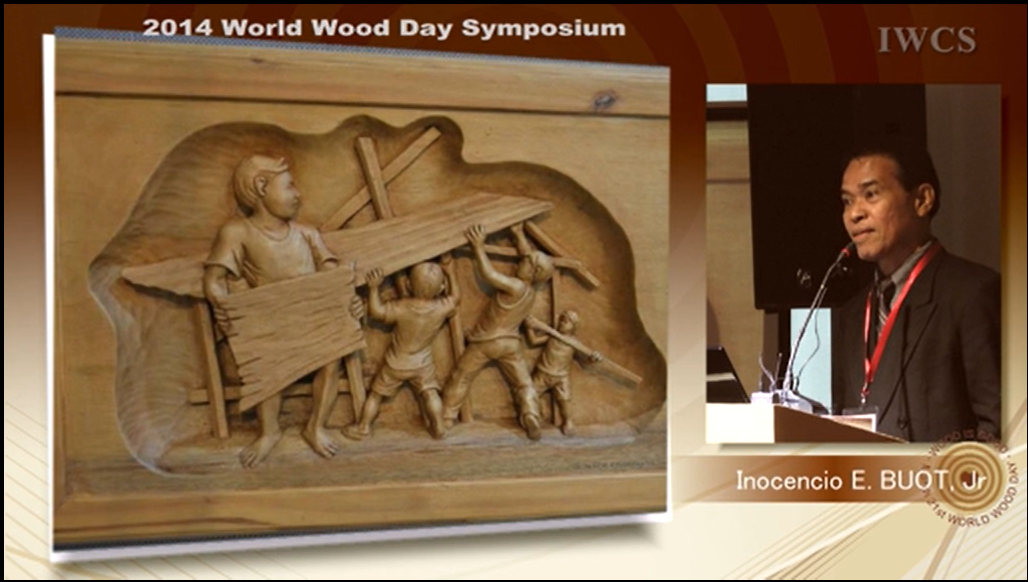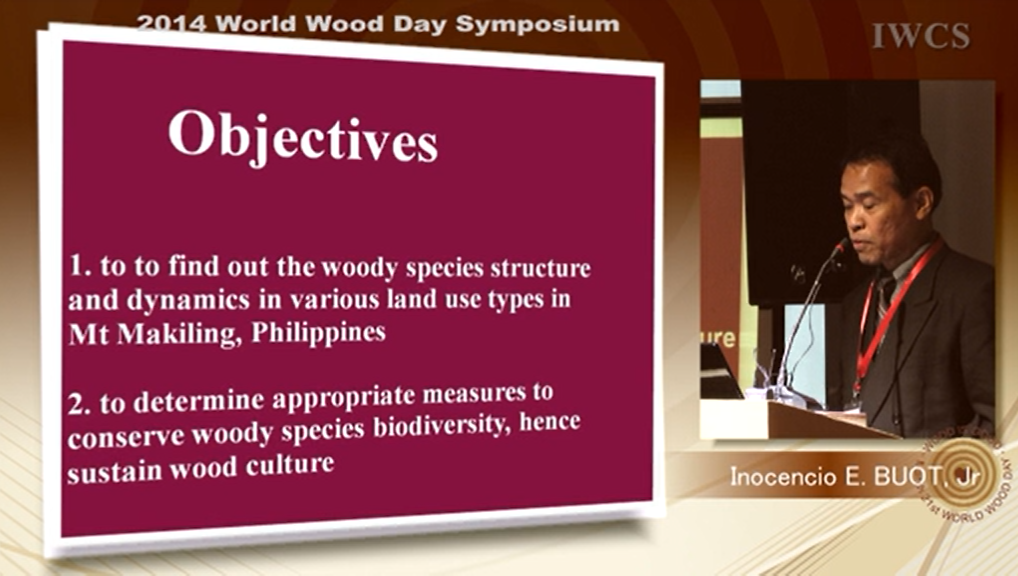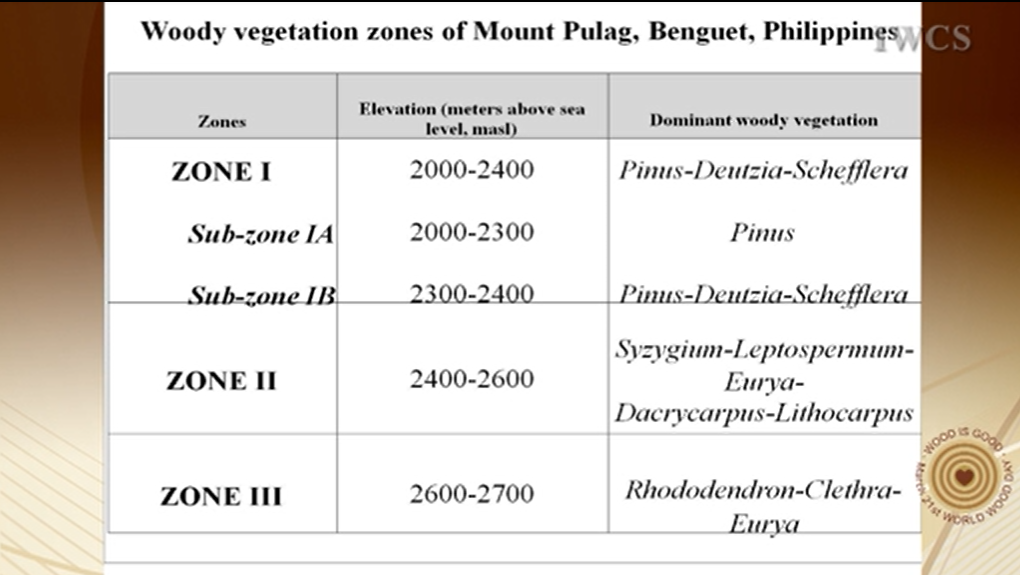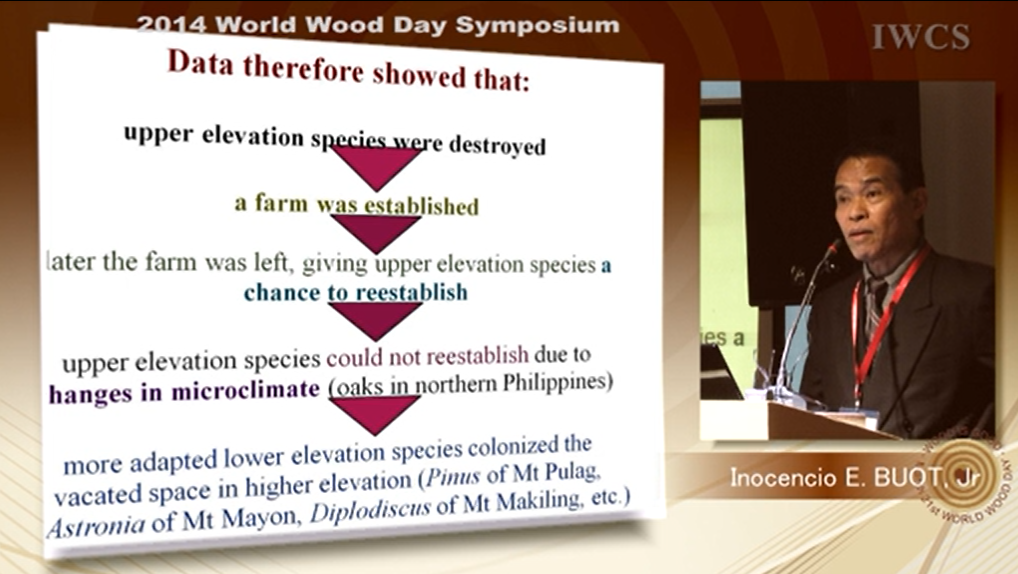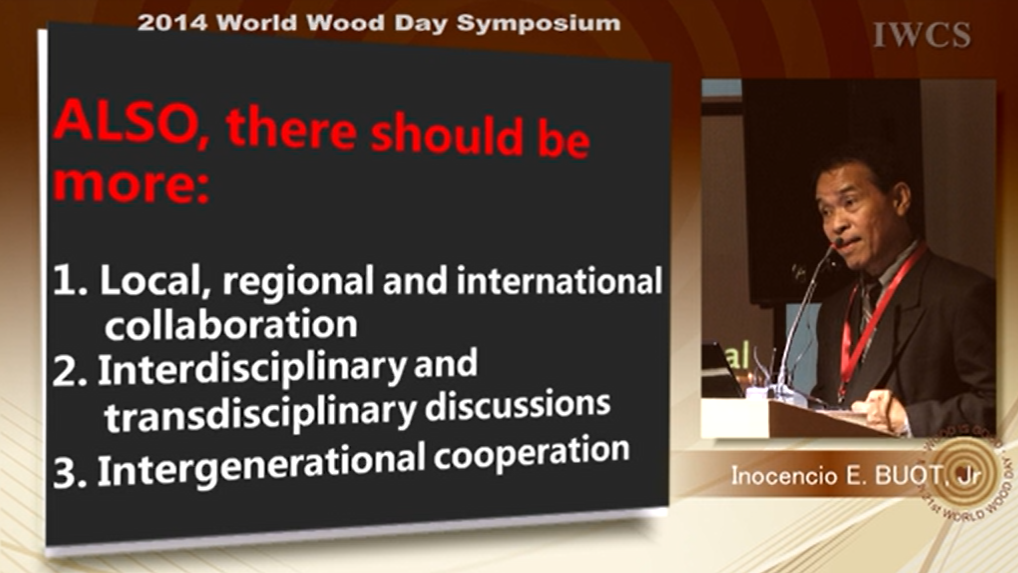会议名称:2014世界木材日研讨会
会议时间:3月21-22日
会议地点:福建·仙游 中国古典工艺博览城
报告人:Inocencio E. Buot Jr
Faculty of Management and Development Studies, University of the Philippines Open University
Abstract
Wood forms part of the rich cultural heritage of the Philippines. However, there is a decline in the number of people using wood now, with its high price due to sustained loss of woody plant biodiversity and the popularity the less expensive non-wood products. Forty (40) plots ranging from 10x10m to 20x20m in size were set up near human disturbed landscapes representing different patches on Mt. Makiling, Luzon, Island, Philippines (121011`E, 14008`N, 1114m altitude) to find out the floristic composition of woody species in various land use types such as, agricultural farm, forest edge, residential, buffer zone and undisturbed forest. A total of 89 species belonging to 72 genera in 42 families were recorded in 40 plots. The agricultural farm, being the most vulnerable, have the lowest number of woody species (17). The next land use type in the vulnerable category is the forest edge with only 25 species. The buffer zone and the undisturbed forest similarly have the highest number (45). Hierarchical cluster analysis using the SPSS program indicated at a dissimilarity level of 15, two distinct groups, the vulnerable (agricultural farm, residential and forest edge) and the more stable (buffer zone and the undisturbed forest) landscapes. At a lower dissimilarity level however (Euclidean distance of 7), the five land uses are distinct with only one outlier.
Based on basal area values derived from diameter at breast height (DBH), Brassaia actinophylla, Cocos nucifera, Ficus spp., Gmelina arborea, Spathodea campanulata and Sweitenia macrophylla, are dominant in the vulnerable landscape types. Alangium longiflorum, Chisocheton cumingianus, Litsea garciae, Ludekia bernardoi and Pisonia umbellifera dominate the more stable landscape types while Arenga pinnata, Celtis luzonica and Diplodiscus paniculatus are the most dominant in both the vulnerable and the more stable landscape types. The original native dominants, Dipterocarpaceae, are occupying lower DBH classes, still struggling to regenerate after extensive logging in the 1940s. Conservation strategies should include biodiversity education at the community level, establishing of biodiversity corridors, enforcement of laws and ordinances and home gardening among others.
Keywords: landscape biodiversity, floristics, disturbed landscapes, land use, mountain ecosystems
Speaker Biography
Dr Inocencio E. Buot Jr
Professor/Dean, Faculty of Management and Development Studies, University of the Philippines Open University
Dr Inocencio E Buot Jr is a professor of ecology and systematic botany and the current dean of the Faculty of Management and Development Studies, University of the Philippines Open University. He is involved in teaching and research related to botany, ecology, taxonomy and biogeography. He holds a PhD degree in Ecology from the Chiba University (Japan) in 1998 through a Monbusho graduate fellowship. He did his postdoctoral research in landscape ecology at the National Institute of Forestry in Kyoto with the postdoctoral fellowship program of the Japan Society for the Promotion of Science. Dr Buot published around 79 articles in journals and more than 40 papers in form of botany laboratory manuals, chapters in books or proceedings in the areas of ecology, taxonomy and socio-ecological landscapes. Dr Buot has traveled extensively in the Philippines, Asian countries, particularly southeast and east Asia, the United States and the United Kingdom presenting papers in scientific conferences or delivering plenary and keynote speeches. Right now he is a Project Coordinator in a three-year JICA funded collaborative project in human capacity building of the stakeholders of the Ifugao Rice Terraces in the Philippines, a UNESCO World Cultural Heritage site and a Globally Important Agricultural Heritage Systems (GIAHS) site. Dr Buot has been involved in two Wood Carving competitions in the Philippines, a Wood Furniture and Wood Collapsible House Design contest and a Wood Forum with strong support from the International Wood Culture Society since 2013.
责任编辑:iwcs25Z/H


 3,175
3,175